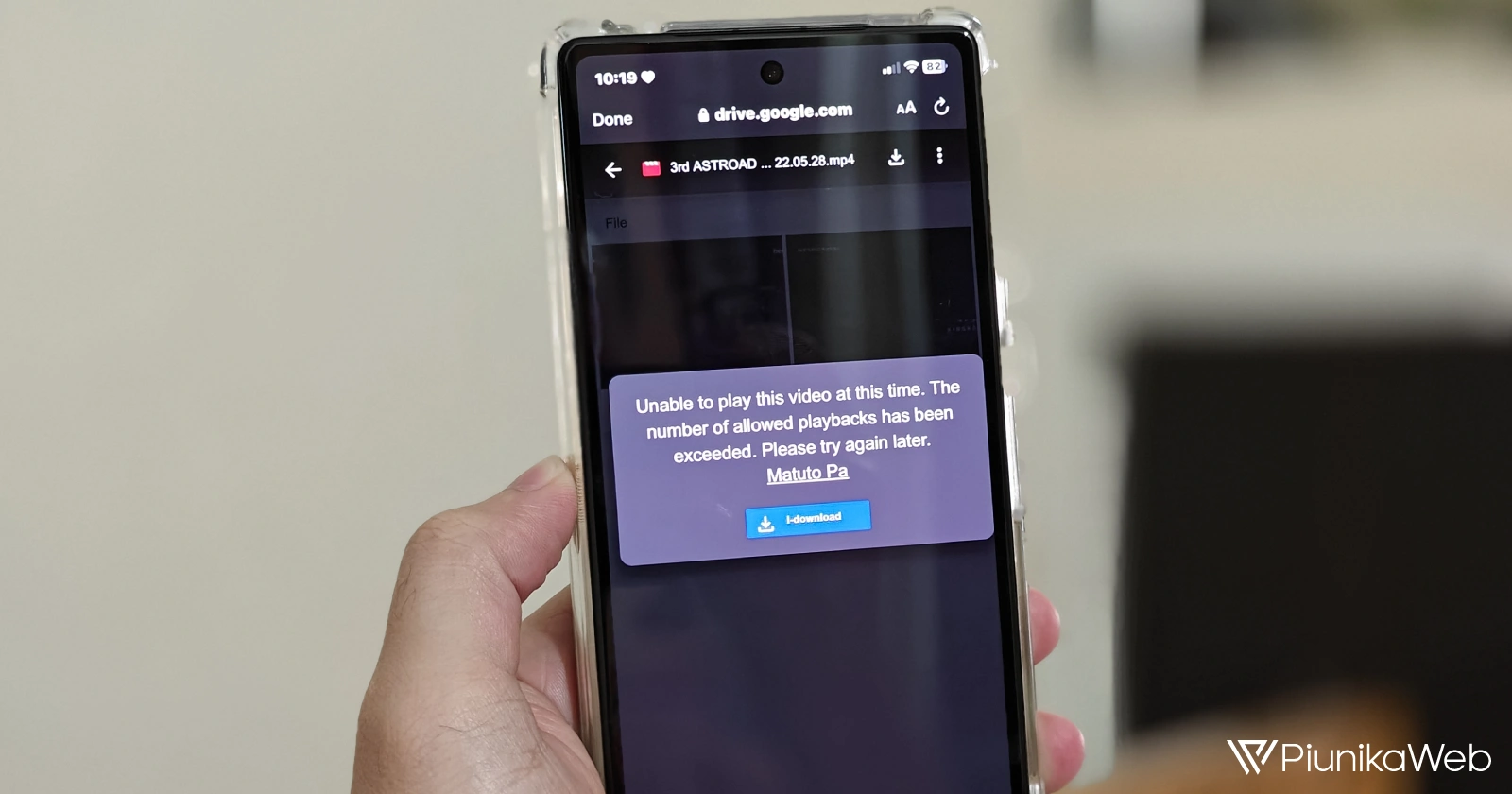Aside from being buggy, Backup and Sync can get highly confusing being a common client for both Google Drive and Google Photos. So we thought of digging-in deep to see and bring up the actual connection between the three, focusing on areas like how the client varies in case of Photos and Drive, as well as how it handles deletion operations in various use cases.
Difference between Backup and Sync for Photos and Backup and Sync for Drive
As you might have observed, Backup and sync can be downloaded from both Google Drive as well as Google Photos website. Wile some say they are same, we observed a couple of significant differences between the two variants.

- Unlike Drive’s variant, if the client is installed through Google Photos, there comes a separate option inquiring about whether you wish to only Backup photos and videos to Google Photos and Drive or Backup all file types to Google Drive along with pictures and videos to Google Photos.
- For Backup and Sync downloaded through Google Drive, the storage option is by default set to Original quality. This could be the potential reason for storage menace.
Where as when the client is downloaded through Google Photos, the storage is by default set to High quality.
How Backup and Sync handles delete operations for Google Photos and Google Drive
Before we begin discussing the delete use-cases we tested, it’s worth keeping in mind that Backup and Sync uploads stuff to Google Drive by default. In case the Upload photos and videos to Google Photos option was enabled during setup (or a similar option – shown below – was enabled in the Preferences menu), photos and videos are also backed up on Google Photos (in addition to Drive).
Another point worth discussing is the Removing items option in the Preferences menu. It has three values to choose from: Remove items everywhere, Don’t remove items everywhere (set by default), and Ask me before removing items everywhere.
Now, in order to test how Backup and Sync handles deletion operations, we created a folder on our system’s Desktop and populated it with a picture which was immediately synced to Google Drive and Photos through the client. For the record, the Upload photos and videos to Google Photos option and the Ask me before removing items everywhere option were enabled in the client’s Preferences menu.
Use Case 1: Delete synced picture from Google photos
We selected the photo that was just uploaded to Google Photos – as can be seen in the screenshot below
And then deleted it using the MOVE TO TRASH option.
The aforementioned deletion operation not only moved the image to Google Photos’ Trash but also moved the same file in Google Drive to the Trash folder there.
So things are working in tandem so far. But now, if you delete the picture in question from Trash on Google Photos, it will neither affect the local copy of that image in your computer nor the one that’s currently in Google Drive’s Trash.
Moving on, if you want the local copy to get deleted when you delete the image from cloud, you have to delete the image that’s currently in Google Drive’s Trash. We confirmed this at our end, observing that deleting the image in Google Drive’s Trash deleted not only the local copy but the one that was in Google Photos’ Trash as well.
The Backup and Sync client showed the following notification on our system when Google Drive’s copy of image was deleted from the service’s Trash folder:
Conclusion: Deleting merely from Google Photos doesn’t affect Google Drive’s copy or local system copy. To delete the local copy you need to delete the file permanently from Drive’s Trash.
Use Case 2: Deleting already backed up picture from local system
Like use case 1 above, the setup for this use case is also same: A picture stored locally in a folder on our system, and the same picture is also backed up to Google photos and Google Drive through Backup and Sync.
On deleting the picture’s local copy, Backup and Sync showed a notification informing that the backed up copies (on both Drive and Photos) will be deleted.
On completing this delete operation we observed that the cloud copies were moved to Trash on both Photos and Drive.
Conclusion: Deleting an already backed up image from local system deletes it from both Google Photos and Google Drive. This is however a soft deletion as the images are moved to their respective Trash folders on cloud.
Repeating these use cases with remaining Removing items option values
As we mentioned before while discussing the two use cases, the Removing items option was set to Ask me before removing items everywhere. So we repeated these use cases with the other two values as well.
When the option was set to Remove items everywhere, we were expecting no change as compared to Ask me before removing items everywhere, except that the Backup and Sync app will not ask for user confirmation (notification popups) before deleting stuff on local system or cloud. And we were right, as that’s exactly what happened.
Finally, when Removing items option was set to Don’t remove items everywhere, we observed that deleting the local copy had no affect on the backed up copies on Google Photos and Google Drive. Similarly, deleting cloud copies (whether from Google Photos or Google Drive) didn’t result in the local copy being deleted.
Final words
We sincerely hope that this effort of ours will be helpful in clearing multiple confusions related to the Backup and Sync application. Of course, there are several other aspects that still require an in-depth exploration, but we are glad that we managed to take the starting step. Expect more such investigative stories in the future. Until then, if you have any doubt or query regarding Backup and Sync, share it with us in comments below.
Oh and yes, if you are a beginner, we have also compiled all the steps involving Backup and Sync’s installation for you. If interested, you can go through them in the following section.
Detailed installation steps for Backup and Sync (for beginners)
If backup and sync is downloaded from Google Drive’s website, the stages that show up while setting up the app are as follows:
1. Once you install the client it will ask for login confirmation
2. After you login, the following information will be displayed
3. Proceeding further, My Laptop page will popup displaying information like what all folders will be backed up by default, the quality of images being backed up (which is original by default), as well as an option to enable/disable uploading photos videos to Google Photos.
Note: It can be clearly seen that the storage option for photos and videos is by default set to Original quality(which offers a storage limit of 15GB for free, post that its paid). You can change it to High quality to enjoy unlimited free space on Google Photos. Also the option to upload Photos and videos to Google Photos is unchecked. So, in case you want your pictures and videos to also upload on Google Photos, enable the option (we did this).
4. Next in line, the following page will show up, which conveys that the files stored on cloud will be synced to the local computer.
5. After that the Google Drive page shows up, where the options to sync between My Drive and local computer are enabled by default.
You can also switch from syncing everything to sync specific folders in case you wish to limit. Anyway, clikcing the START button brings up a notification box asking you to confirm the merge operation (click CONTINUE).
6. Once the setup is complete the following notification will be displayed over the Backup and Sync (cloud) icon on the system tray, and your files will get into auto syncing.
In case the client is downloaded from Google Photos the procedure offers slightly different options.
1. On installing the client, you will be welcomed by following page
2. Click the GET STARTED button, and enter your login credentials (just like in the case of Drive’s client)
3. Unlike Drive however, the second page is for Setup. Here we can see different options, with Backup photos and videos option checked by default. With this option enabled only pictures and videos are backed up from local system to cloud (both Drive and Photos).
In case, you wish to back up not only pictures and videos, but all files to cloud, switch to Backup all file types. This will backup all files to Drive and pictures and videos to Google Photos as well. Clicking on NEXT will take you to My Laptop page showing available storage quality options and folders that are set to be backed up by default.
Cikcing the START button brings up a notification box asking you to confirm the merge operation (just like it happened in the case of Drive’s client). Click CONTINUE.
4. With the successful setup, you’ll get to see the following notifications through Backup and sync icon on system tray.


